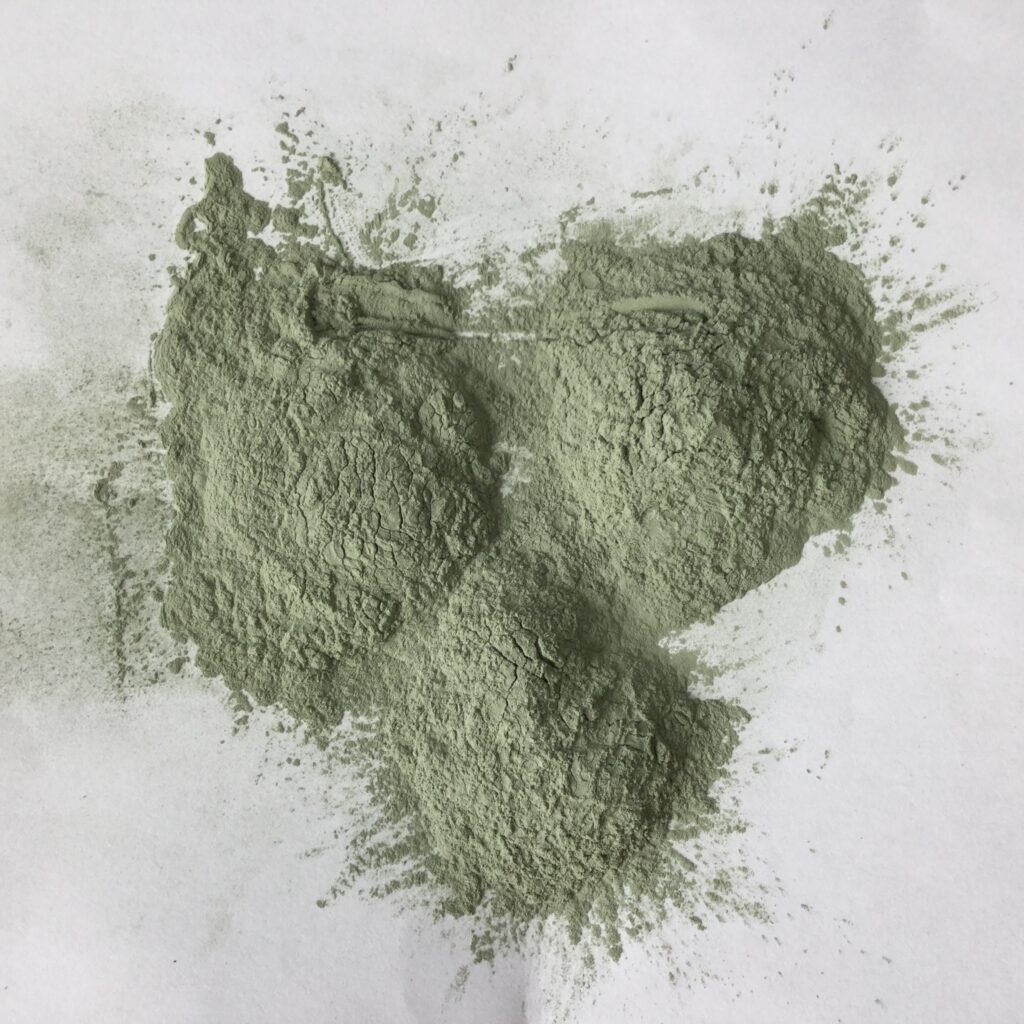The role of green silicon carbide as a filler in composite materials
Green silicon carbide is renowned for its high hardness, excellent thermal conductivity, good chemical stability, and wear resistance. When added as a filler to composite materials (such as polymer-, metal-, or ceramic-based composites), it significantly enhances the overall performance of the matrix material.
Its primary benefits can be summarized as follows:
1. Significantly Improves Hardness and Wear Resistance
Mechanism of Action: Green silicon carbide has a Mohs hardness of 9.2-9.3, second only to diamond and boron carbide. Evenly dispersing its particles in a softer matrix material (such as epoxy resin, nylon, rubber, or aluminum alloy) creates a barrier, like countless tiny “armor” embedded within the material.
Effect: The composite material’s surface resistance to scratching, wear, and plastic deformation is significantly enhanced. This makes the product ideal for applications requiring high wear resistance, such as:
Wear-resistant liners, chutes, impellers
Brake pads, clutch plates (increases friction coefficient and wear resistance)
High-performance tires (used as a reinforcing filler to improve tire wear resistance and service life)
2. Significantly Enhanced Mechanical Properties
Mechanism of Action: Hard green silicon carbide particles act as a reinforcing phase, effectively transferring and dissipating stress applied to the material, inhibiting deformation and crack propagation in the matrix material.
Effect: The composite material’s compressive strength, flexural strength, rigidity, and dimensional stability are significantly improved. However, it also typically increases the material’s brittleness, so the addition ratio and particle size distribution need to be adjusted based on the application.
3. Excellent Improved Thermal Properties
High Thermal Conductivity: Green silicon carbide has a very high thermal conductivity (approximately 100-140 W/m·K). Adding it to poor thermal conductors, such as polymers, can significantly improve the composite’s thermal conductivity.
Applications: Used in electronic packaging materials, thermally conductive silicones, thermally conductive plastics, and other materials to help dissipate heat from electronic components.
Low Thermal Expansion Coefficient: Green silicon carbide has a very low thermal expansion coefficient. Compounding it with a high-thermal expansion matrix (such as resin or metal) can reduce the thermal expansion coefficient of the overall material, making the product more dimensionally stable under temperature fluctuations.
Applications: Components of precision instruments, optical platforms, and other equipment sensitive to thermal deformation.
4. Improved Friction Performance
Mechanism of Action: In friction materials (such as brake pads), green silicon carbide acts as a wear-resistant abrasive material that provides a stable friction coefficient.
Effect: It helps keep the friction surface clean, prevents slippage, and provides a stable, reliable, and durable friction coefficient, preventing brake performance fade.
5. Other Functions
Chemical Stability: Green silicon carbide is acid- and alkali-resistant, improving the durability of composite materials in corrosive environments.
Processability: In some cases, the addition of hard particles may increase wear on machining tools, but it may also improve the material’s grindability or polishability.
Application Summary
Wear-resistant products: Mud pump components, mining machinery liners, and wear-resistant parts for agricultural machinery.
Friction materials: High-performance automotive brake pads and clutch facings.
Thermal conductive materials: LED heat sink substrates, CPU thermal paste, and packaging materials for power modules.
Structural parts: Aerospace and automotive components requiring high stiffness, low thermal deformation, and a certain degree of wear resistance.
Specialty Coatings and Ceramics: Used to produce wear-resistant and corrosion-resistant coatings and structural ceramics.


